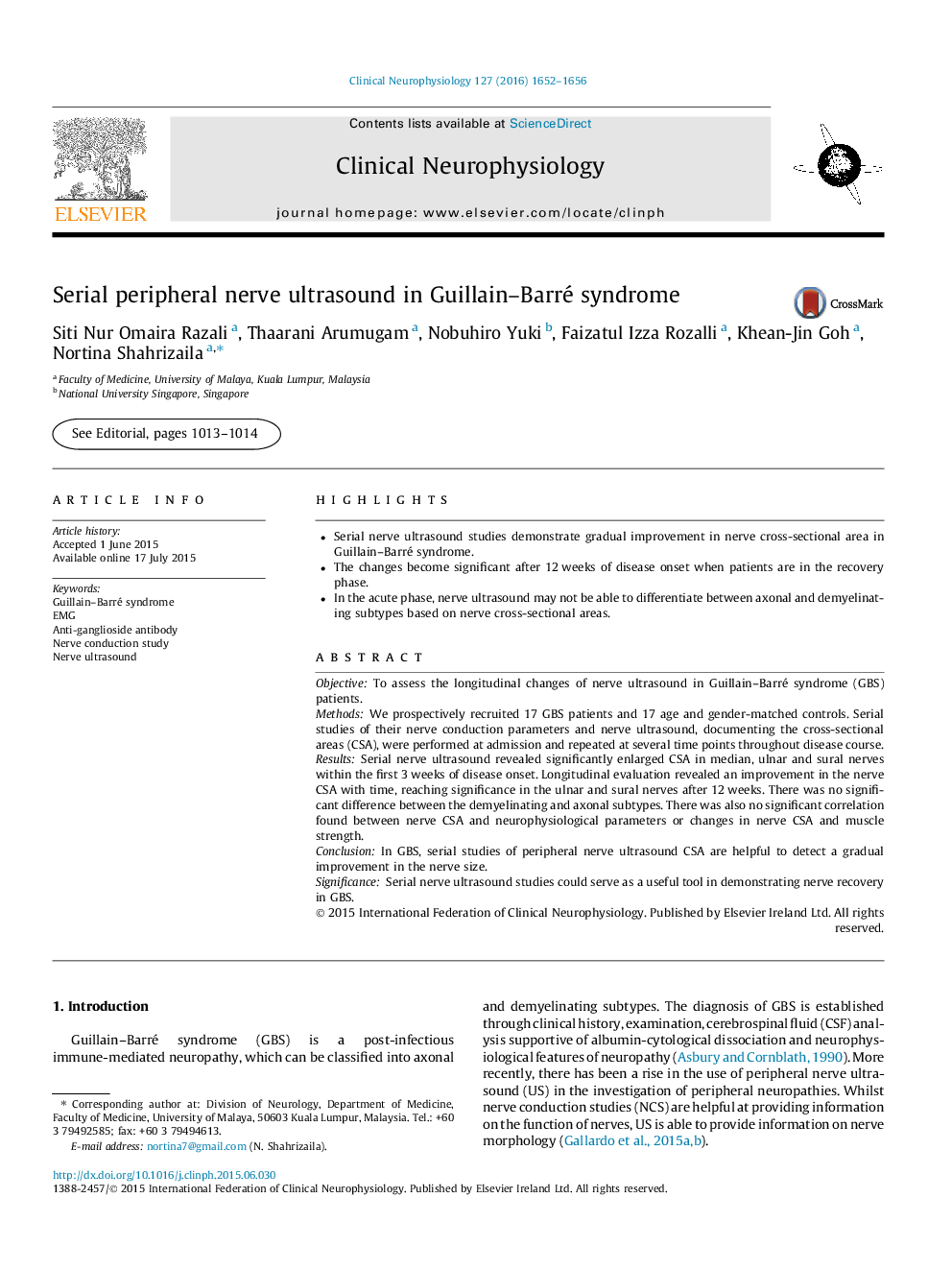| Article ID | Journal | Published Year | Pages | File Type |
|---|---|---|---|---|
| 6007686 | Clinical Neurophysiology | 2016 | 5 Pages |
â¢Serial nerve ultrasound studies demonstrate gradual improvement in nerve cross-sectional area in Guillain-Barré syndrome.â¢The changes become significant after 12 weeks of disease onset when patients are in the recovery phase.â¢In the acute phase, nerve ultrasound may not be able to differentiate between axonal and demyelinating subtypes based on nerve cross-sectional areas.
ObjectiveTo assess the longitudinal changes of nerve ultrasound in Guillain-Barré syndrome (GBS) patients.MethodsWe prospectively recruited 17 GBS patients and 17 age and gender-matched controls. Serial studies of their nerve conduction parameters and nerve ultrasound, documenting the cross-sectional areas (CSA), were performed at admission and repeated at several time points throughout disease course.ResultsSerial nerve ultrasound revealed significantly enlarged CSA in median, ulnar and sural nerves within the first 3Â weeks of disease onset. Longitudinal evaluation revealed an improvement in the nerve CSA with time, reaching significance in the ulnar and sural nerves after 12Â weeks. There was no significant difference between the demyelinating and axonal subtypes. There was also no significant correlation found between nerve CSA and neurophysiological parameters or changes in nerve CSA and muscle strength.ConclusionIn GBS, serial studies of peripheral nerve ultrasound CSA are helpful to detect a gradual improvement in the nerve size.SignificanceSerial nerve ultrasound studies could serve as a useful tool in demonstrating nerve recovery in GBS.
